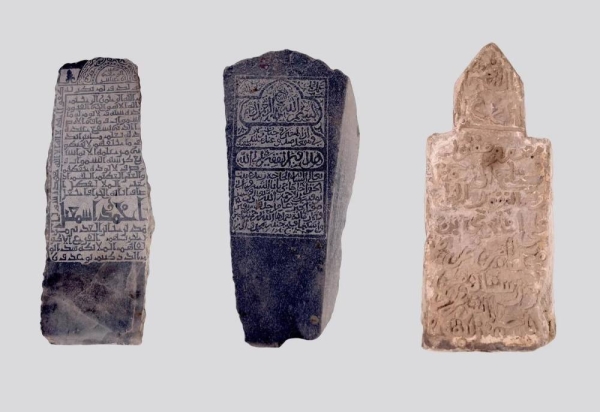
Minister of Culture Prince Badr Bin Abdullah Bin Farhan published on Monday pictures of heritage artworks recovered from the Jeddah Historical Area. The pictures showed decorations in the form of fish sculpture and phrases carved in a number of rocks, expressing life in Jeddah.
The minister posted on his Twitter account the artworks drawn by the renowned Saudi artist Abdel Halim Radwi in 1981.
In a tweet, Prince Badr said the heritage pieces were recovered during demolition of a commercial building and kiosks in the Historical Area. The pictures showed decorations in the form of fish and phrases carved in a number of rocks, expressing life in Jeddah.
Radwi, who died in 2006, was one of the Kingdom’s most-respected and pioneer plastic artists. Radwi is perhaps best known for 15 monumental outdoor sculptures adorning the Red Sea port city, including Inkwell, Pen and Paper, which reproduce these objects on a large scale.
The artist also engaged with the still life genre as in the 1975 painting, Still Life with Fish, in which he used paint and sand to produce a flattened image of two fishes in a loose geometric composition.
Radwi, who obtained a doctorate from the Royal Academy of Fine Arts in Madrid in 1979, was director of Jeddah’s Centre for Fine Arts from 1968 to 1974.
His paintings traveled to many Arab and Western countries through his exhibitions, while the number of his works reached about 3,500 diverse works between sculpture, collage, painting and murals.
His works are original and remarkable with a focus on the Hijazi heritage in particular, in addition to the comprehensive Islamic character. Some of his paintings have been preserved in museums around the world.
Radwi’s artwork was recovered at a time when the Jeddah Historical Area is going to witness a massive revival following the launch of the Jeddah Historical Area Revival Project by Crown Prince Muhammad Bin Salman on Sept. 6 this year.
The project will highlight the heritage features of the Historical Area in Al-Balad neighborhood of Jeddah, which has already found a place in UNESCO’s World Heritage Site in 2014.
Jeddah has a long history that dates back to thousands of years. Historians traced its founding back to nearly 3,000 years, as some studies conducted by scholars indicate that there was human dwellings in this area since the Stone Age, as some traces and Thamudi writings were found in Wadi Briman, east of Jeddah, and Wadi Boweb, northeast of the city.
The Historical Area is an unparalleled historical site in the Kingdom, as it houses more than 600 heritage buildings, 36 historical mosques, five major historical markets, ancient corridors and squares, and sites with important historical significance such as the old waterfront, which was a major route for the Hajj and Umrah pilgrims.
The revived project will tell visitors to the Historic Jeddah the great story of the arduous journey of pilgrims to perform the annual pilgrimage of Hajj since the dawn of Islam.
The work on the revival project would extend up to 15 years, during which the Historic Jeddah will be developed in accordance with multiple tracks covering infrastructure and services; developing the natural and environmental field; improving the quality of life; and enhancing urban features with the aim of making Historic Jeddah an inspiring destination in the region.
The project aims to create an integrated environment in Historic Jeddah that has multiple natural components, including 5-km-long developed waterfronts, green spaces and open gardens covering 15 percent of the total area of Jeddah’s Al-Balad and within the project area of 2.5 square kilometers.








